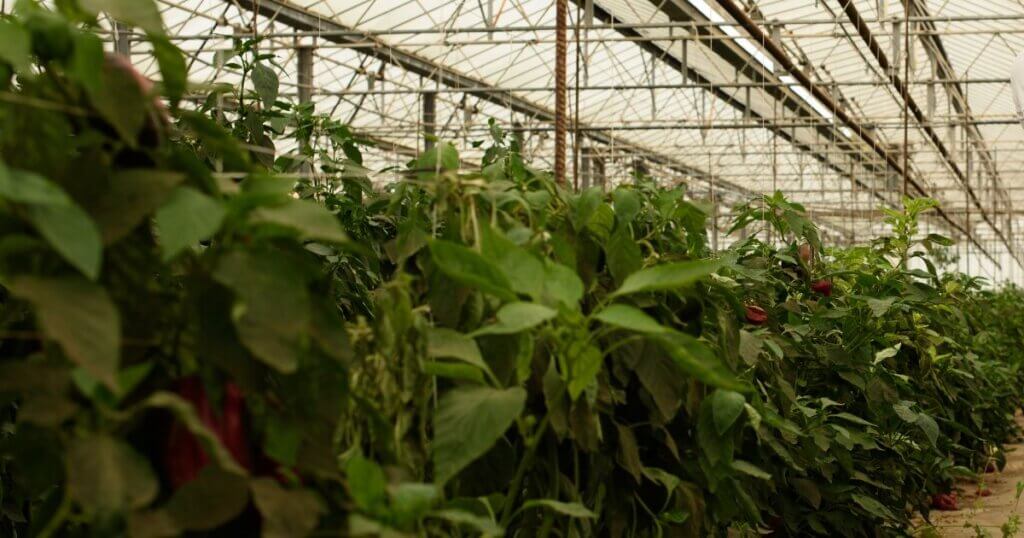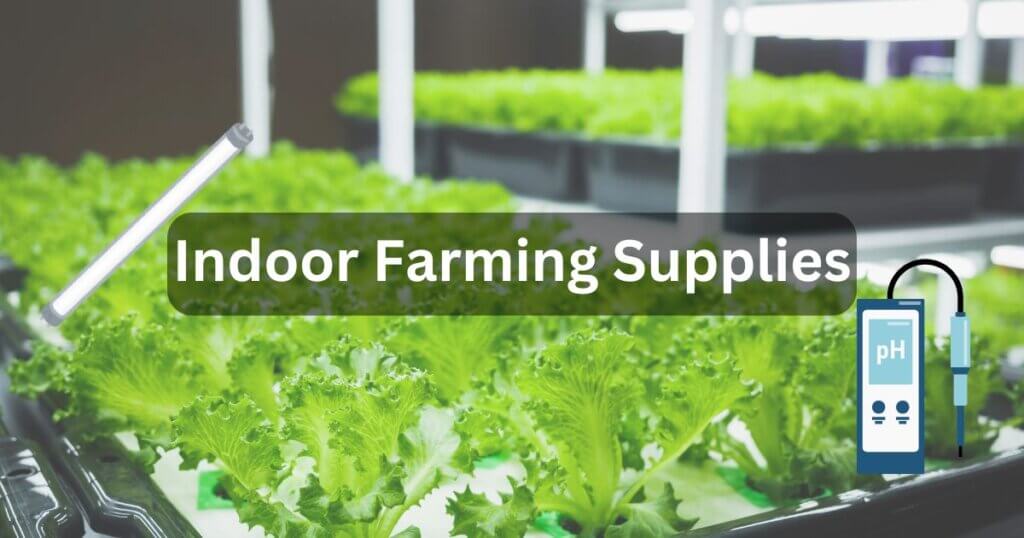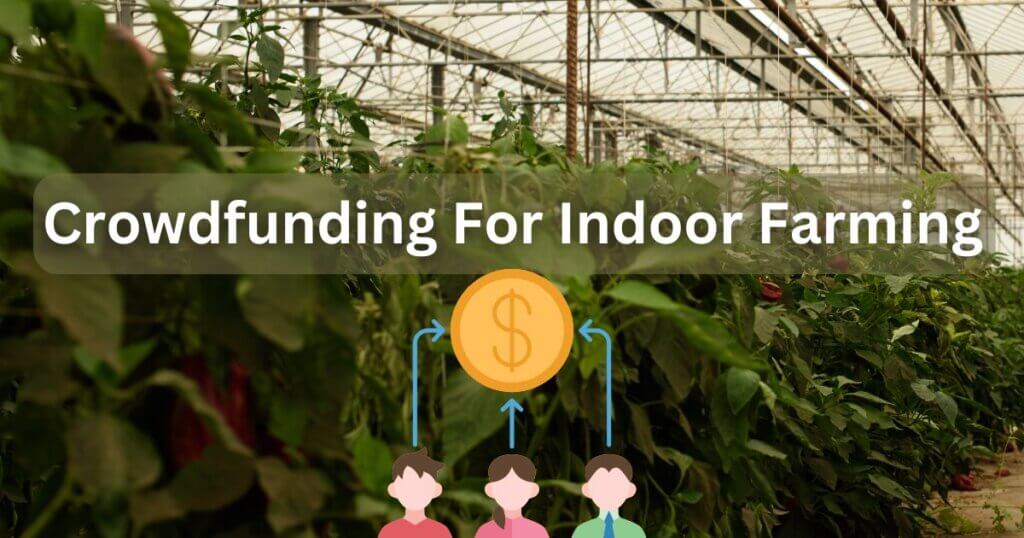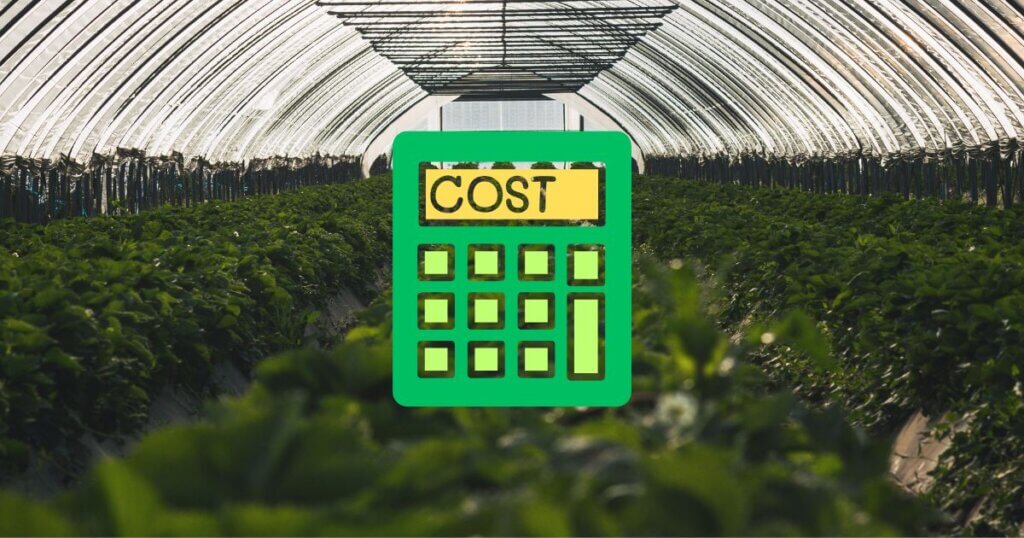Ultimate Indoor Farming for Restaurants: Redefining Freshness and Sustainability

Some of the links in this post are affiliate links. As an Amazon Associate, we earn a referral fee from qualifying purchases—at no extra cost to you.
Indoor farming has emerged as a groundbreaking solution for restaurants seeking to provide fresh, sustainable, and locally sourced ingredients for their culinary creations. By harnessing innovative technologies and sustainable practices, indoor farming is revolutionizing how restaurants operate and transforming the dining experience for chefs and patrons. In this article, we will explore the concept of indoor farming, its benefits for restaurants, and how it contributes to a more sustainable future. Join us as we delve into the world of fresh and local produce grown right in the heart of the restaurant.
Table of Contents
The Rise of Indoor Farming
Indoor farming, also known as vertical farming or controlled environment agriculture (CEA), is cultivating crops in a controlled environment, such as warehouses, greenhouses, or even repurposed urban spaces. This modern approach to agriculture utilizes advanced techniques, including hydroponics, aeroponics, and aquaponics, to create optimal conditions for plant growth.
1. The Evolution of Agriculture
Traditional agriculture heavily relies on favorable weather conditions, vast land expanses, and substantial water resources. However, these factors often limit the ability to produce consistent, high-quality crops throughout the year. Indoor farming eliminates these limitations by providing a controlled environment where temperature, humidity, light, and nutrients can be precisely regulated, allowing for year-round cultivation.
2. Sustainable Practices for a Greener Future
Indoor farming promotes sustainable practices that reduce the environmental impact of food production. By minimizing the need for pesticides and herbicides and optimizing water and energy usage, indoor farms contribute to lower carbon emissions and conserve natural resources. This eco-conscious approach aligns perfectly with the growing demand for environmentally responsible dining options.
3. Urban Farming: Cultivating in the City
One of the most exciting aspects of indoor farming is its ability to transform urban spaces into thriving agricultural hubs. Restaurants can repurpose unused areas through vertical farming or even establish off-site indoor farms. This adds a touch of greenery to urban landscapes and reduces the transportation distance from farm to table, ensuring unparalleled freshness.
Benefits of Indoor Farming for Restaurants
Integrating indoor farming into the restaurant industry offers many benefits that elevate the dining experience for chefs, restaurateurs, and customers alike. Let’s explore these advantages in detail.
1. Uncompromising Freshness
Imagine being able to pick a vibrant, crisp lettuce leaf just moments before it graces your plate. With indoor farming, restaurants can offer unparalleled freshness as the produce is harvested on-site or nearby. This translates to enhanced flavors, vibrant colors, and a superior dining experience that delights the senses.
The Chef’n Herb Saver is designed to keep harvested herbs fresh for longer, which is essential for restaurants using freshly cut greens from indoor gardens. It extends the life of herbs while maintaining flavor and color, making it an excellent companion to in-house farming.
2. Year-round Availability
Indoor farming allows restaurants to break free from the limitations imposed by seasonal variations in crop availability. By cultivating crops in a controlled environment, restaurants can offer a consistent supply of fresh produce throughout the year, regardless of external factors like weather or geographic location. Chefs can unleash their creativity without being constrained by ingredient availability.
3. Enhanced Flavor Profiles
The controlled environment in which indoor farming takes place provides optimal conditions for plant growth. This results in crops that are not only consistently available but also boast enhanced flavor profiles. The precise control over factors such as light spectrum, temperature, and nutrient delivery allows chefs to experiment with unique flavors, textures, and aromas, elevating their culinary creations to new heights.
4. Hyperlocal Sourcing
Restaurants increasingly focus on hyperlocal sourcing, and indoor farming fits perfectly into this trend. By growing produce on-site or within the vicinity, restaurants can proudly offer a truly local and sustainable dining experience. This supports the local economy and strengthens the relationship between the restaurant and its community, fostering a sense of pride and connection.
Innovations in Indoor Farming Technology
Technological advancements play a crucial role in achieving the full potential of indoor farming. Several cutting-edge innovations are driving progress in this field, enabling restaurants to maximize the benefits of fresh and locally sourced produce.
1. Hydroponics: Water-based Cultivation
Hydroponics is a soilless cultivation method where plants are grown in nutrient-rich water solutions. This technique eliminates the need for traditional soil. It enables precise control over nutrient delivery, resulting in faster growth and higher yields. Hydroponic systems are modular, adaptable, and easily integrated into existing restaurant spaces, making them a popular choice for indoor farming.
The AeroGarden Bounty Elite is a popular hydroponic growing system that’s ideal for restaurant settings. It allows chefs to grow herbs, leafy greens, and small vegetables indoors with precision-controlled lighting and nutrients. Its sleek design and modular size make it easy to incorporate into kitchen or prep areas for on-demand freshness.
2. Aeroponics: Misty Nurturing
Aeroponics elevates indoor farming by nourishing plants with a fine mist of nutrient-rich water. The suspended roots receive an optimal blend of moisture, oxygen, and nutrients, promoting rapid growth and efficient resource utilization. This innovative technique is well-suited for growing delicate herbs and leafy greens, making it a valuable addition to the culinary world.
The Lettuce Grow Farmstand is an efficient aeroponic garden that uses a mist system to nourish plants. Its high yield, low water usage, and space-saving vertical design make it perfect for restaurant use, particularly for growing herbs and salad greens in-house.
3. Vertical Farming: Maximizing Space
Vertical farming is a game-changer for indoor farming, allowing for the cultivation of crops in stacked layers. By utilizing vertical space, restaurants can optimize land usage and significantly increase their crop yield per square foot. This approach is especially beneficial for urban environments where space is limited. With vertical farming, the sky’s the limit for restaurant owners seeking to create sustainable food sources within a limited footprint.
The Mr. Stacky 5 Tiered Vertical Gardening Planter is a smart example of how vertical farming can be implemented practically in restaurants. Its multi-level, soil-based tower allows chefs to grow a variety of vegetables and herbs in a minimal footprint, perfect for urban kitchens.
4. Smart Farming: The Power of Automation
Integrating smart farming technologies automates various processes, ensuring optimal plant growth and resource management. IoT (Internet of Things) sensors and AI-powered systems monitor and adjust environmental parameters in real-time, guaranteeing that crops receive the ideal conditions for their development. This level of automation reduces the need for human intervention and empowers restaurants to focus on creativity and culinary excellence.
The GrowHub Smart Garden Controller automates essential growing conditions such as lighting, humidity, and temperature. It’s ideal for restaurant owners and chefs who want to ensure optimal growth conditions with minimal manual effort, enhancing crop reliability and efficiency.
A Sustainable Future: Environmental and Social Impact
Indoor farming holds immense promise when it comes to shaping a sustainable future. Its impact extends beyond the culinary world, benefiting the environment and the local community.
1. Reduced Environmental Footprint
The environmentally friendly indoor farming practices significantly reduce the restaurant industry’s ecological footprint. By minimizing the use of pesticides, herbicides, and chemical fertilizers, indoor farms prevent harmful substances from entering the environment and promote healthier ecosystems. Additionally, the controlled use of resources, such as water and energy, reduces waste and conserves precious natural resources.
2. Food Security and Resilience
Indoor farming enhances food security by providing a reliable fresh produce supply, irrespective of external factors. This resilience is particularly crucial in regions prone to extreme weather events or remote areas with limited access to fresh produce. By establishing indoor farms, restaurants can contribute to a more stable and secure food system, ensuring that communities have nutritious meals year-round.
3. Engaging the Local Community
Indoor farming can create a strong sense of community engagement and empowerment. By integrating vertical farms within their establishments or partnering with local urban farms, restaurants can actively involve the community in the cultivation process. This interaction fosters education, awareness, and appreciation for sustainable practices, inspiring individuals to make conscious choices about their food sources.
Conclusion
Indoor farming for restaurants revolutionizes food production by prioritizing freshness, sustainability, and innovation. It ensures year-round access to locally sourced produce while reducing environmental impact. This approach helps restaurants stand out, meet growing consumer demand for sustainable dining, and foster community engagement. Embracing indoor farming elevates culinary experiences and contributes to a greener future.
FAQs – Indoor Farming For Restaurants
1. What are the initial costs of setting up an indoor farm for a restaurant?
The initial investment varies depending on the size, technology, and type of indoor farming system used. Hydroponic or aeroponic setups can cost anywhere from a few thousand to hundreds of thousands of dollars, but long-term savings on sourcing and waste reduction can offset the costs.
2. Can indoor farming be profitable for small restaurants?
Yes, while the upfront cost may seem high, indoor farming reduces expenses related to transportation, spoilage, and supplier markups. Additionally, offering hyperlocal, fresh ingredients can attract customers willing to pay a premium for quality and sustainability.
3. What types of crops are best suited for indoor farming in restaurants?
Leafy greens (lettuce, spinach, kale), herbs (basil, mint, cilantro), microgreens, edible flowers, and some fruits like strawberries and cherry tomatoes thrive in indoor farms. The choice depends on the restaurant’s menu and customer preferences.
4. Are there any government incentives or grants for restaurants adopting indoor farming?
Many governments offer grants, tax incentives, or subsidies for businesses investing in sustainable agriculture, including indoor farming. Researching local programs or collaborating with urban farming initiatives can help reduce startup costs.
5. What are the maintenance requirements for an indoor farm in a restaurant?
Indoor farms require regular monitoring of nutrient levels, pH balance, lighting schedules, and pest control. Automated smart farming systems can help reduce labor and ensure optimal growing conditions with minimal manual intervention.
Other Resources Related To Indoor Farming For Restaurants
- “Vertical Farming and the Future of Sustainable Restaurants”
This article explores how vertical farming can transform the restaurant industry by providing fresh, local produce year-round, reducing environmental impact, and enhancing food security. - “Enhancing Restaurants With Indoor Gardens”
This resource discusses the benefits of integrating indoor gardens into restaurant spaces, including improved ingredient quality, sustainability, and customer engagement. - “Vertical Farming with Tower Farms in Restaurants”
This article highlights how restaurants can implement vertical farming systems to grow fresh produce on-site, enhancing menu offerings and sustainability practices. - “Vertical Farming Technology by iFarm”
iFarm offers advanced vertical farming solutions suitable for restaurants aiming to produce fresh, healthy foods in-house, utilizing cutting-edge technology for efficient cultivation. - “Case Studies and Testimonials | Freight Farm Success Stories”
This page provides real-world examples of how restaurants and other businesses have successfully integrated Freight Farms’ container farming systems to supply fresh, local produce year-round.
Some Interesting Indoor Farming Videos









